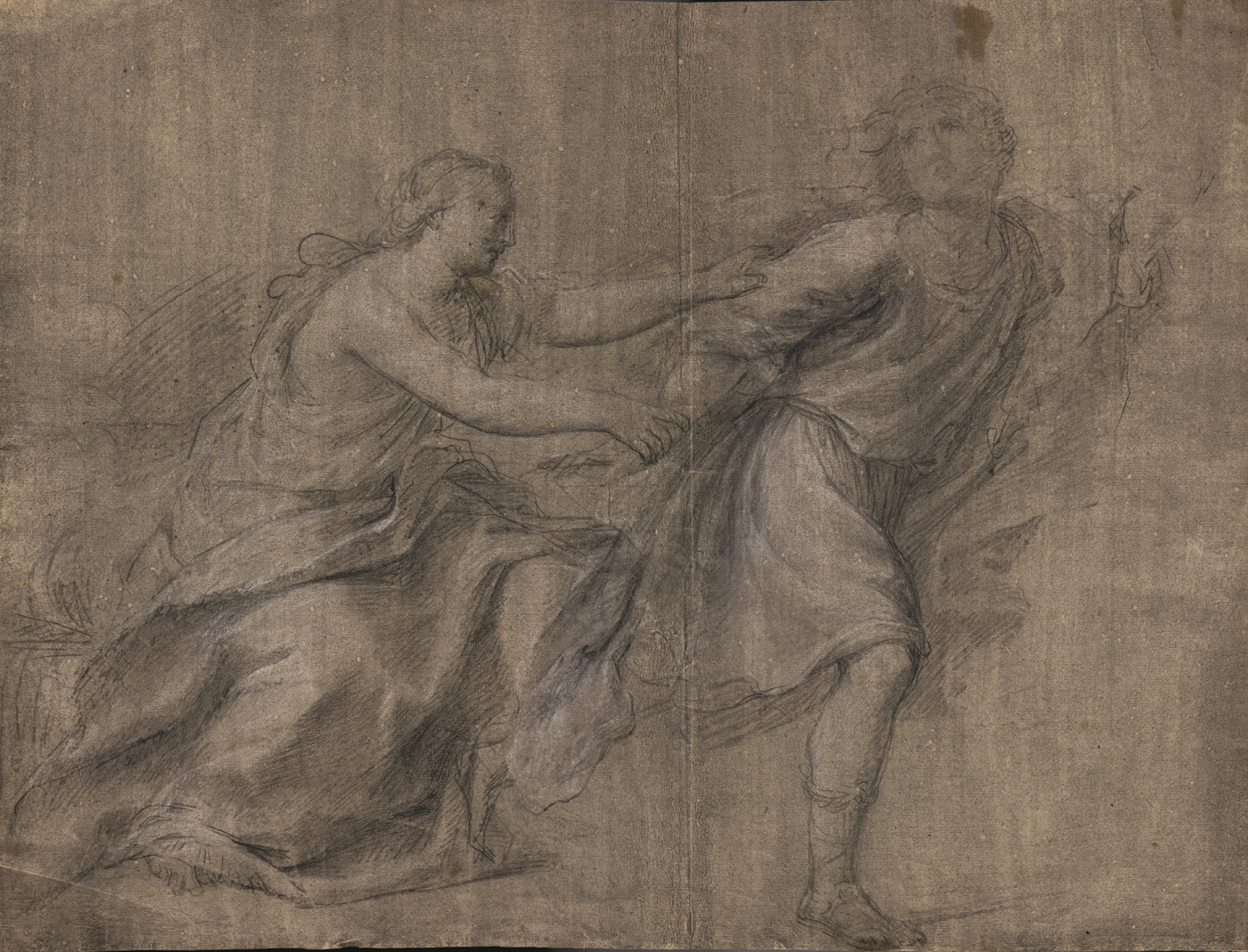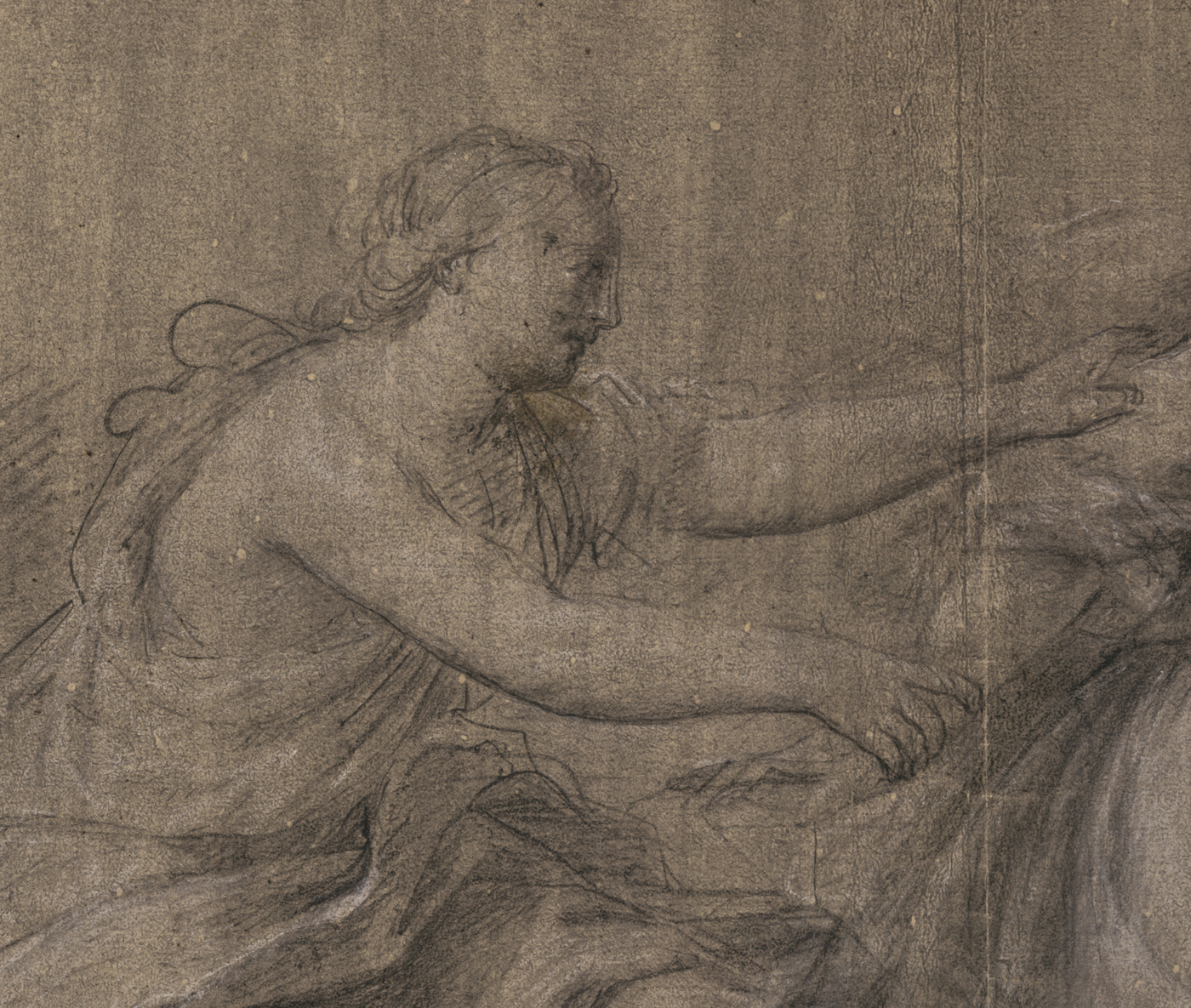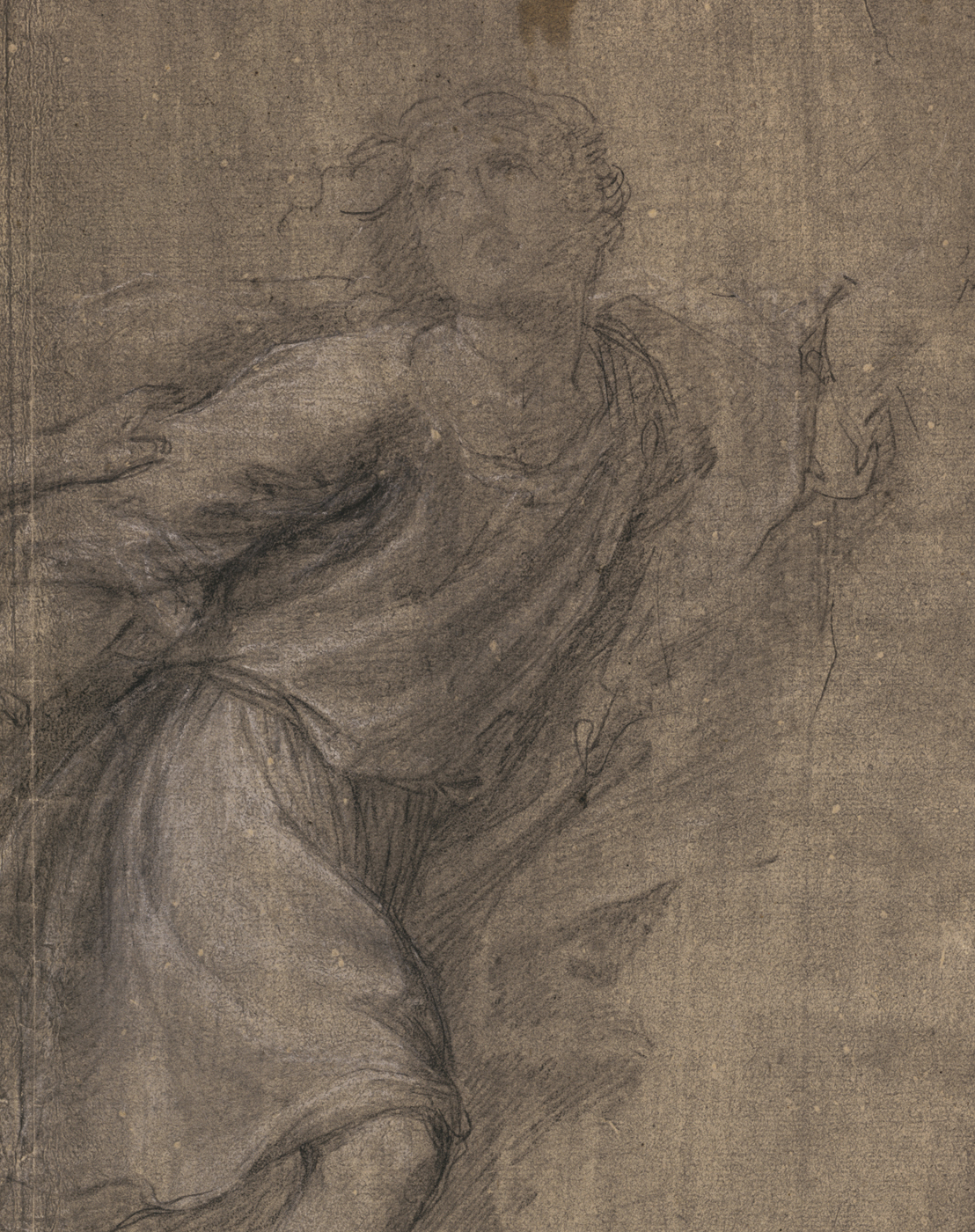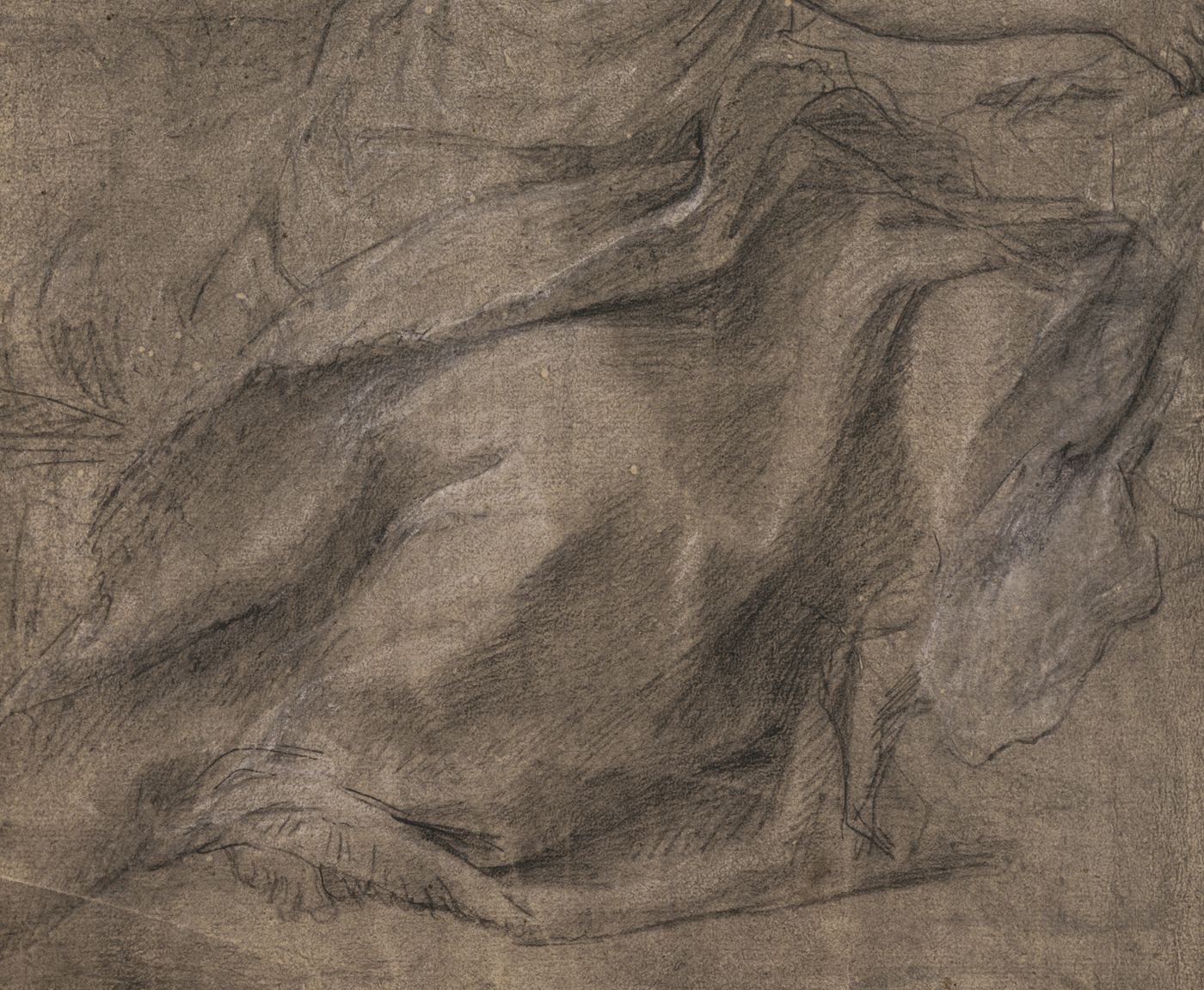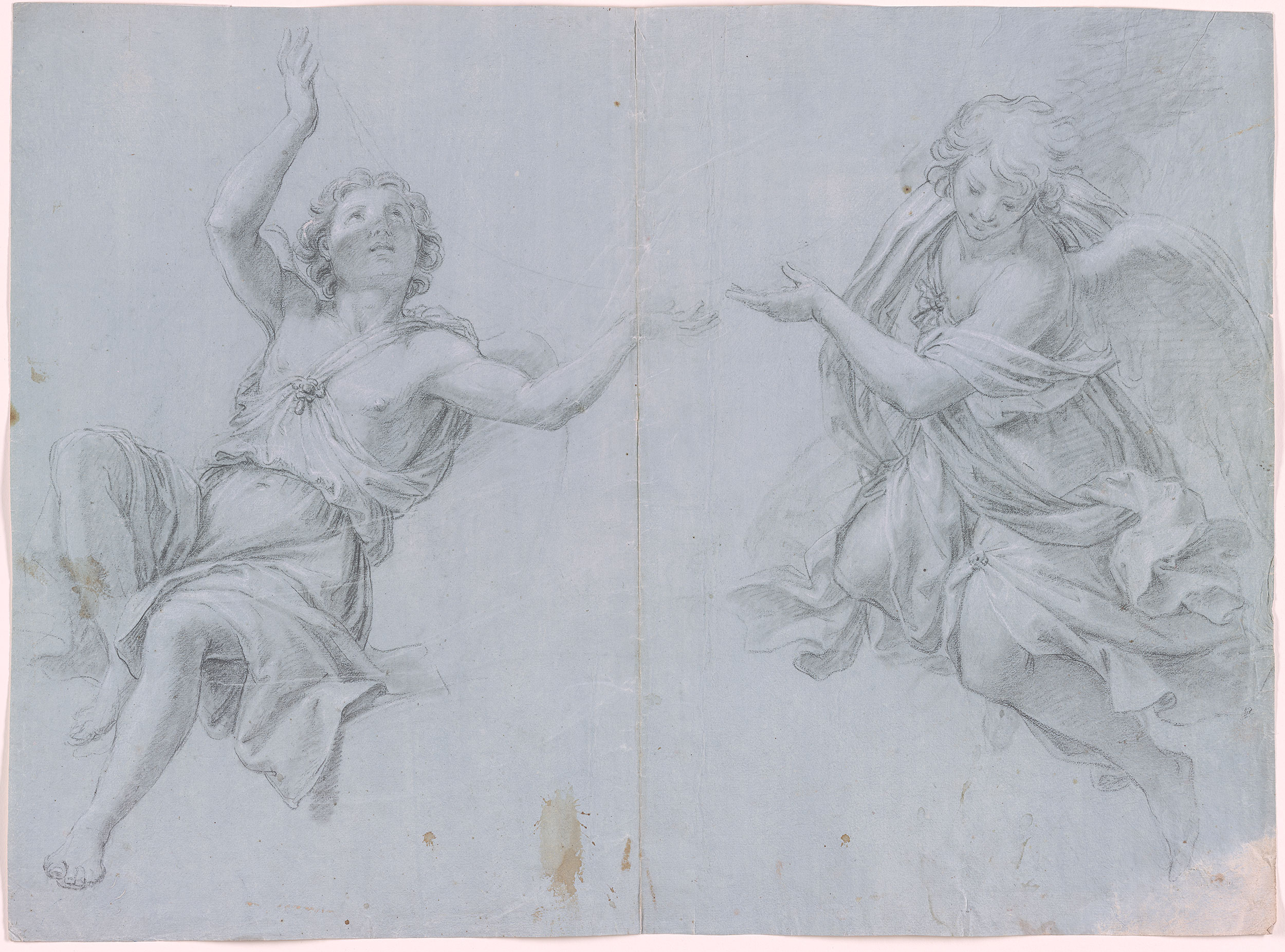GIACOMO ZOBOLI (Modena 1681 – Rome 1767)
Giacomo Zoboli (Modena 1681 – Rome 1767)
Joseph and Potiphar’s Wife
Black chalk, heightened with white chalk, on paper prepared light grey, 391 x 517 mm (15.4 x 20.4 inch)
Provenance
Private collection, Italy
***
Giacomo Zoboli, also known as Jacopo, was born in Modena in 1681 and trained there in the studio of the d’Este court painter Francesco Stringa (1635–1709), with whom he collaborated on frescoes in the Palazzo Ducale in 1708.1 Following Stringa’s death in 1709, Zoboli moved to Bolgona where he assisted Giovanni Gioseffo dal Sole until 1713, deviding his time between his apprenticeship and the creation of a number of autonomous works. In Bologna was patronized by the collector Marchese Taddeo Rangoni, and received commissions from the Elector of Bavaria and the Habsburgs. He then settled in Rome, where he was much influenced by the Classicism of Carlo Maratta. In 1718 he was admitted as member of the Accademia dei Virtuosi of the Pantheon, and in 1725 as to the Guild of St Luke.
Zoboli is largely forgotten today, but in his day enjoyed considerable fame. He was patronised by Cardinal Neri Maria Corsini, grandson of Pope Clement XII. In 1742 he was commissioned to paint cartoons for mosaics in the dome of the Chapel of the Madonna of the Column, located to the left of the tribune in St Peter’s, Rome, which were executed between 1751 and 1757 under Pope Benedict XIV. Zoboli’s Roman works fall in two categories: firstly religious works of a fairly traditional sort, intended for the clergy, especially the Jesuit order; secondly he painted works in a startlingly modern style and he has been seen as a forerunner of Roman ‘Proto-Neoclaccisist’ tendencies, in particular on account of his masterpiece of the Assasination of Julius Caesar of 1724.2
Virtually no drawings by Zoboli were known until the 1980s, when a cache of them was discovered, which had long remained in family ownership.3 Since then, drawings by Zoboli have been purchased by the leading museums and print rooms, including the British Museum, London, the Fitzwilliam Museum, Cambridge, and the Metropolitan Museum, New York.4 Zoboli generally drew in black and white chalks on paper of generous size, prepared with a light grey wash. The present sheet is of majestic size and one of the largest known by the artist. It can be compared to Zoboli’s Two Angels in the Morgan Museum & Library, New York, which is of almost identical size (fig.).5
Many of Zoboli’s chalk drawings are preparatory to paintings and altarpieces, but no painting of the subject of Joseph and Potiphar’s wife is currently known. As told in Genesis 39:1–20, the artist has shown the dramatic moment where the enslaved Joseph tries to escape the advances of the wife of Pharaoh’s officer Potiphar. Dr Federico Giannini has observed that the female physique is much in the Bolognese style, especially influenced by Dal Sole, while the overall composition is more Roman in character. The present drawing may therefore be dated at the beginning of Zoboli's Roman career. The subject was hugely popular in Italian Seicento and Settecento art, and had been famously depicted by Guido Reni and Guercino.
The attribution of this particularly large and atmospheric drawing has been confirmed by Dr Federico Giannini and Dr Daniele Benati, to whom I am grateful.
1. For the artist, see V. Casale, ‘I quadri di canozzazione: Lazzaro Baldi, Giacomo Zoboli. Produzione, riproduzione e qualità’, Paragone, 389, 1982, pp. 33-61; E. Negro, ‘Giacomo Zoboli: contributi all'opera’, in Il Carrobbio, XII, 1986, pp. 250-56; G. Manni, E. Negro and M. Pirondini, ‘Giacomo Zoboli’, in Arte Emiliana. Dalle raccolte storiche al nuovo collezionismo, Modena, 1989.
2. Since the painting was included in the exhibition The Age of Neoclassicism, held in London in 1972. See also Federica Pirani in Paolo Moreno (ed.), Lisippo: L'arte e la fortuna, Milan 1995, cat. no. 7.3, p. 434.
3. See Maria Barbara Guerrieri Borsoi, Galleria Marcello Aldega, Disegni di Giacomo Zoboli, Rome 1984 and Robert Randolf Coleman ‘A Cache of Drawings by Giacomo Zoboli’ Drawing, vol. XI, no. 2, 1989, pp. 25-30.
4. The Virgin in Visitation, black chalk, heigtened with white chalk, on grey paper, 410 x 268 mm; British Museum, inv. no. 1990,0519.17, acquired 1990, Coleman, op. cit., fig. 5; Study of a Flying Angel, black chalk, heightened with white chalk, on grey paper, 369 x 276 mm, Fitzwilliam Museum, Cambridge, inv. no. PD.16-1995, acquired in 1995; Christ Blessing, black chalk, heightened with white chalk, on grey paper, 427 x 275 mm, Metropolitan Museum, New York, inv. 1986.36, acquired in 1986.
5. Black chalk, heightened with white chalk, on blue-grey paper, 413 x 559 mm; inv. no. 1988.4, acquired in 1988.
